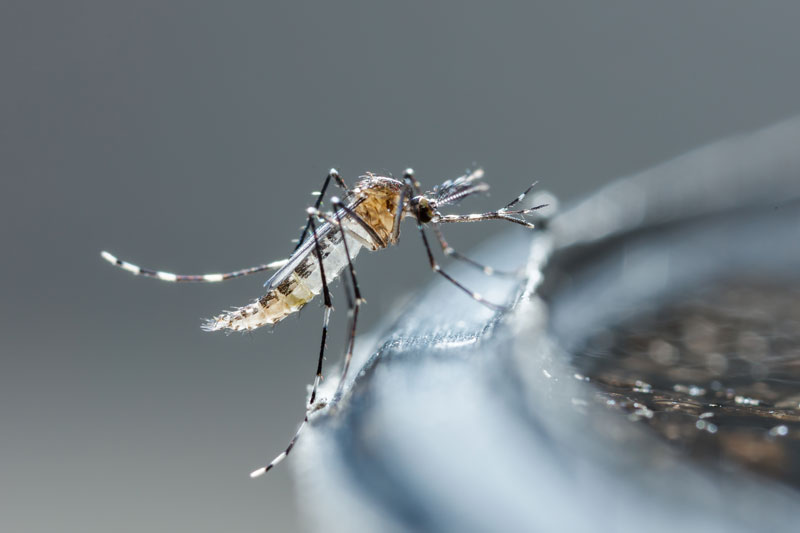Viruses
OUR VIRUSES
We handle many BSL2 & BSL3 viruses so you don’t have to…
These are our viruses, but we are constantly expanding our collection. If you are interested in applying our services to other BSL2 or BSL3 viruses, please contact us and we will do our best to help.
BSL2 & BSL3 VIRUSES
Browse our virus library
Human coronavirus NL63 (HCoV-NL63)
Cytomegalovirus (CMV)
Human coronavirus 229E (HCoV-229E)
Dengue virus (serotypes 1-4)
Human coronavirus OC43 (HCoV-OC43)
Human immunodeficiency virus (HIV)
Influenza (A and B)
Ross River virus
Respiratory syncytial virus (RSV)
Semliki Forest virus
Vaccinia virus
Zika virus (African and Asian)
SARS-CoV-2
Sindbis virus
Our Viruses
Flaviviruses
Our long interest and experience in these viral groups means that we have developed and optimized a variety of tools and reagents to study different stages of viral life cycle and multiple aspects of viral biology. Also, we can help with assay development and advise on follow-up studies.
Dengue virus
With estimated 390 million infections each year, dengue virus has become one of the main target of vaccine and drug development efforts. The only currently licensed vaccine against dengue is not equally effective against all serotypes and has mainly been recommended for populations that have already been exposed to the virus. The search for more effective vaccines and for novel antiviral therapies is still a very much active field of research.
Besides the four dengue virus serotypes, we also work with replicon reporter systems, and with expression systems encoding dengue structural and non-structural proteins.
Dengue 1, Dengue 2, Dengue 3, Dengue 4
Yellow fever virus YF17D
In spite of the introduction of a highly effective vaccine, yellow fever virus still causes recurrent and deadly burst in Africa. The vaccine strain 17D has been attenuated via several passages of the virulent Asibi strain in chicken embryo tissues, in order to reduce its viscero- and neuro-tropism. The safe vaccine strain YF17D is routinely used to study the biology of yellow fever virus and to understand the immunologic properties of one of the best vaccines ever developed.
Zika virus
Zika virus infection is mostly asymptomatic, or can result in a mild illness. However, the recent explosive spread of Zika in the Americas has caused alarm due to the now established link between Zika infection and microcephaly (reduced head size and brain damage) in new-born babies. Although major efforts are being directed towards a Zika vaccine, experimental evidence of antibody cross-reactivity with dengue virus raises concerns over the possibility of antibody-dependent enhancement and disease aggravation. Many unique aspects of Zika virus infection remain elusive, including the link between viral infection and pathogenesis, and what caused such a rapid diffusion of the Asian strains.
Zika virus African strain (MP1751)
Zika virus Asian strain (H/FP/2013)
Our viruses
Alphaviruses
We handle multiple Alphaviruses in our containment facilities and would be glad to discuss how we can advance your Alphavirus research. Working with Ross River virus, Sindbis virus, or Semliki Forest virus? Get in touch to find out how we can help.
Ross River virus
Ross River virus is a human pathogen responsible for epidemic polyarthritis, a debilitating disease characterized by pain and swelling in the small joints of hands and feet and in the knees. Ross River virus is widespread in Australia, New Guinea, and the Solomon Islands.
Ross River virus T48
Sindbis virus
Thought to be diffused across several European countries, frequent outbreaks of Sindbis virus infections have been reported in Finland and Sweden. Diseases can be mild or asymptomatic, but in a considerable number of cases SINV infection leads to persistent joint manifestations that can continue for months or years or even become chronic.
Besides being a human pathogen, Sindbis virus is also studied as a model alphavirus and to understand the molecular and immune bases of virus-induced arthritogenic diseases.
Semliki Forest Virus
Semliki Forest virus rarely causes disease in humans. However, it has been widely adopted as a research tool because of its efficient replication and broad host range. Simliki has been used in the development of gene therapy and as a vector for vaccines and anti-cancer agents. Its neurotropism makes it also a vector of choice for gene delivery to neurons.
Our viruses
Respiratory viruses
We can offer a wide range of services to help advance your respiratory virus research. Contact us today to learn how we can help.
Human coronaviruses (HCoV-NL63, HCoV-229E, HCoV-OC43)
Human coronaviruses (NL63, 229E, OC43) are well adapted to humans, circulating widely and mostly causing only mild disease in immunocompetent adults. These CoVs can be incredibly useful research tools and surrogates for the BL3 coronaviruses (e.g., SARS-CoV-2).
Influenza
Besides of its annual come back, influenza virus is feared to be a likely cause of the next viral pandemic. Scientist around the world are constantly monitoring for new viral strains in the human and animal population, and looking for more permanent solutions to this recurrent threat, like a universal flu vaccine. To support their efforts, we have access to both historical and seasonal influenza A (IAV) and B (IBV) strains, including IAV H1N1 A/WSN/1933 and IBV Yamagata B/Phuket/3073/2013 .
Respiratory Syncytial Virus (RSV)
Although generally harmless in adults, RSV remains the main cause of viral-induced pneumonia in infants. While widely studied, there are currently no vaccines or antivirals licensed for RSV.
RSV A2 strain
SARS-CoV-2
In late 2019, the emergence of a novel coronavirus, severe acute respiratory syndrome coronavirus 2 (SARS-CoV-2), caused an outbreak of viral pneumonia (COVID-19) in Wuhan, China. The entire world is experiencing an unprecedented lockdown, and it is very likely that this virus is going to permanently impact our lifestyle and our perception of infectious diseases.
Our viruses
Other viruses
We can offer a wide range of services to help advance your research. Contact us today to learn how we can help.
Human immunodeficiency virus (HIV)
Although kept under control by a combined cocktail of anti-retroviral drugs, there is still no cure or vaccine against the etiological agent of AIDS. Besides being one of the most elusive viruses in antiviral research, the genome of HIV has been used as a powerful gene delivery tool and lentiviral vectors are now commonly used to integrate new genes into the cell DNA. The possibility of pseudotyping the surface of a lentiviral particles with the envelope proteins of different viruses has further expanded the tropism of this delivery system, that is now currently used to engineer cells that are otherwise difficult to transfect.
At VRS we work with several strains of HIV-1 and SIV, as well as with lentiviral vectors.
Vaccinia virus
Vaccinia virus is the poxvirus that was used to eradicate Variola virus, or smallpox, a much more aggressive and highly lethal member of the same family. Vaccinia is a large DNA virus that is still used to date as a model poxvirus, and as a vector to design safer and more immunogenic vaccines. Also, its complex network of interaction with cellular proteins makes of vaccinia and invaluable tool to discover new cellular functions and defense mechanisms.
Vaccinia virus Western Reserve
Human cytomegalovirus (HCMV)
HCMV represents a health risk mostly for immune compromised individual and for transplant patients, however, its widespread presence and the lack of vaccines and well-tolerated therapies make it a priority for antiviral development. At VRS we work with the Merlin strain, which although adapted to grow in tissue culture conditions, still remains one of the most genetically close to clinical isolates.
HCMV Merlin strain
Contact us




